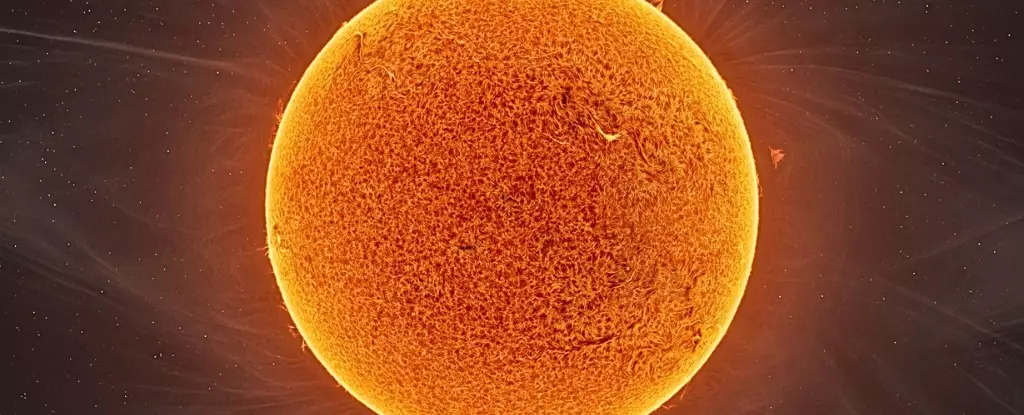The universe is a massive orchestra, and each star plays its unique melody—some throaty, others delicate, yet all revealing the intricate artistry of celestial formation. At the heart of this celestial symphony lies the phenomenon known as starquakes, seismic events resulting from the violent bursting of gas bubbles deep within stellar bodies. Recent research has illuminated this concept further, showing that the frequency patterns generated by these starquakes can yield an astonishing amount of information about a star’s history, dynamics, and even the evolution of our galaxy.
Through groundbreaking research published in Nature, scientists have embarked on an audacious quest to delve into the secrets of the M67 star cluster, situated approximately 3,000 light-years away from Earth. Utilizing the exceptional capabilities of the Kepler space telescope’s K2 mission, researchers tracked the life cycles of various giant stars. The findings offer a paradigm shift in our understanding of stellar evolution, revealing that these stars become ensnared in repetitive ‘tunes’ when their outer layers penetrate a precarious zone within.
The Dance of Vibrations
Starquakes erupt in many stars with turbulent, bubbling outer layers—akin to water boiling in a pot. This violent dance sends vibrations rippling through the entire star, resonating at specific frequencies. By monitoring subtle changes in a star’s brightness, scientists can detect these oscillations and begin to unravel the ‘song’ of a star cluster.
Each ‘song’ encompasses a spectrum of frequencies, reflecting the diverse qualities of each star. Larger stars emit deeper chords, while smaller stars present higher registers. Notably, one of the key frequency indicators is referred to as ‘small spacing,’ representing closely grouped resonant frequencies that can disclose intricate details about a star’s internal mechanics. This has profound implications for our understanding of stellar longevity and transformation, especially as we strive to decode the mysteries surrounding stars that resemble our Sun.
Revisiting Assumptions
Astronomy has long grappled with the complexities of stellar evolution. In searching for patterns and ages among groups like M67, astronomers have relied on the premise that stars with similar chemical compositions evolve uniformly. Nonetheless, the traditional interpretation of frequency signatures often underestimated their depth. Observations showed that in younger stars like the Sun, small spacings elucidate the remaining hydrogen reserves, a critical factor for fusion processes.
In older stars, however, this understanding faced challenges. Historically, researchers believed that small spacings in red giants—stars that had exhausted hydrogen in their cores—cut off new interpretative avenues. Recent findings, however, have shocked the astronomical community. As researchers rigorously measured small spacings within the M67 stars, they uncovered dynamic changes in the stars’ fusion regions that contradicted earlier assumptions.
The stalling of frequency—akin to a skip on a record—happens when a giant star reaches a crucial growth stage. At this juncture, the upper layers assemble a mass that significantly transforms the star’s inner structure, pushing the outer envelope into a turbulent arena where sound waves distort. Notably, the stalling frequency depends heavily on the star’s mass and its chemical makeup, offering an unprecedented tool for determining stellar ages with heightened precision.
Connecting the Dots Across the Galaxy
Stars are historical markers, embedding clues about their environments and the cosmic events that shaped them. Each star’s journey is a testament to the dynamic history of the Milky Way, a galaxy formed through the merging of numerous smaller galaxies, each contributing its unique timeline. The accurate age determination of stars within clusters like M67 helps astronomers compile a comprehensive narrative of galactic transformation across different epochs.
With these revelations, we gain fresh insights into our Sun’s fate, projecting its evolutionary trajectory over billions of years. The ramifications of this understanding are monumental, granting astronomers a renewed purpose to revisit long-held data with new perspectives. The verbal ‘music’ of our universe beckons us not to take our observations at face value—there’s a deeper resonance waiting to be uncovered.
A Call to Arms for Future Astronomers
This newfound appreciation for the sonic secrets sealed within starquakes marks a watershed moment in astrophysics. It underscores the necessity for a shift in our observational methods. Equipped with years of seismic observations scattered across the Milky Way, astronomers now possess an enhanced capacity to decode the melodies of celestial bodies.
As humanity stands at the nexus of this cosmic adventure, we must seize the opportunity to further interpret these pivotal sonic vibrations. The cosmos offers untold stories silenced for eons, and the key lies not just in advanced technology but in our ability to listen—and listen closely. The stars are singing; let us embark on an exploration to decode their symphony.


Leave a Reply